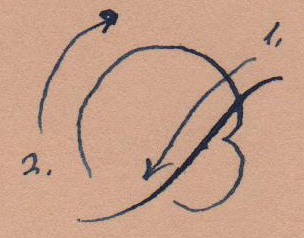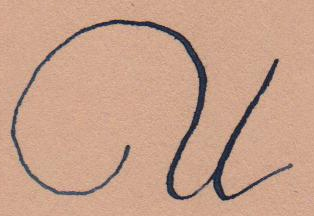Our frequent correspondent “Maypo” writes:
In honor of the passing of that august month (International Steel-Pen Appreciation Month, not the month of August), would it be possible for the good Doctor to provide us with a complete capital A-Z script alphabet hand written with your fine Esterbrook pen? I downloaded the Google documents of the handwriting primers but none of them had the elegant flourishes of the Doctor’s fine handwriting. For those of us that not only want to copy the Doctor in morals and humor, but indeed in all things, even creepily enough, handwriting.
Dr. Boli hardly knows what to say, not least because he seldom thinks about what he is doing when he writes. This reader’s question has led him to undertake an exhaustive analysis of his own handwriting for the first time, and he has concluded that his goal in forming letters is the same as his goal in everything else: to achieve the greatest effect with the least effort. The round strokes that seem to stand out in the capital letters are a good example of that principle. They look very ornamental, and they are about the easiest thing one can do with a pen.
Most of the capital letters are formed in one stroke, with a minority formed in two strokes. The letters seem to fall naturally into groups by the strokes used, with a few stragglers that refuse to fit any pattern. The “shading” (making some strokes thicker) is purely a matter of adding pressure so that the point of the pen spreads a bit—a technique impossible with most modern pens, but quite easy with the flexible point of a steel pen (or a goose quill).
Counterclockwise round stroke: A, M, N. Each of these letters is made with one stroke; that is, without lifting the pen.
Downstroke with clockwise round stroke: B, P, R.
The letter D ought to fit into this pattern, but for no reason he can think of, Dr. Boli has always made it with one stroke, meaning that the round stroke goes in the opposite direction:
Counterclockwise half-circle: C, G, E.
Sweeping upstroke leading to heavy downstroke: H, I, J, K. The K is made in two strokes, all the others in one.
Two clockwise round strokes: T, F. These two are nearly the same, except that in the F the second stroke crosses itself.
Clockwise round stroke: U, V, W, X, Y, Z. The X is made in two strokes, the others in one.
Orphans: L, O, Q, S. Letters that fit no obvious pattern.

























